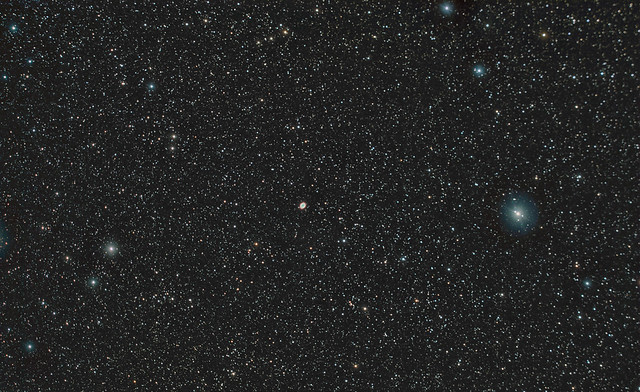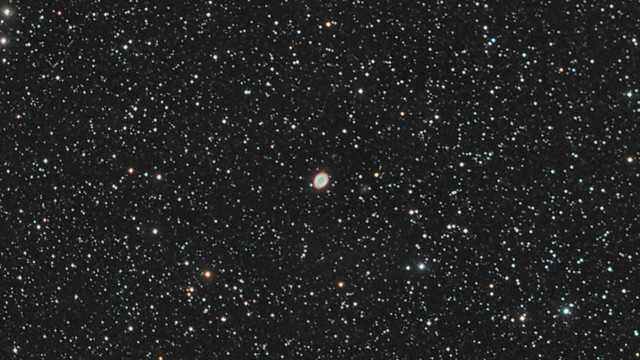There still seems to be some collimation issues, but overall I'm feeling better about the image than some of my previous stuff. What bothers me still is that the upper right corner of the frame seems to be much worse than anywhere else in the image for less than round stars.
Date: 05/14/2011
Location: Goodyear, Arizona
Telescope & Mount: Hyperstar 3 equipped Celestron CGEM 1100HD
Camera - QHY8PRO
Real Focal Length - 545.3mm f/1.95
Image Scale - 2.95"/pixel
Exposure - 100 x 60 seconds
Calibration: Bias, Flats & Bad Pixel Map - No dark frame subtraction
Software: Maxim DL 5 & Photoshop CS5
While this isn't the type of shot that I'm looking to get on a regular basis, I do find some appeal in the way that the tiny nebula sits in the dense star field. This frame is about 2.5º by 1.5º. The second image is a 100% crop of just the center of the image.
 |
| M57 courtesy of the CGEM 1100HD and Hyperstar (click to see full size) |
 |
| Crop of the center portion of the image. Galaxy IC1296 is visible to the right of the nebula. |
No comments:
Post a Comment